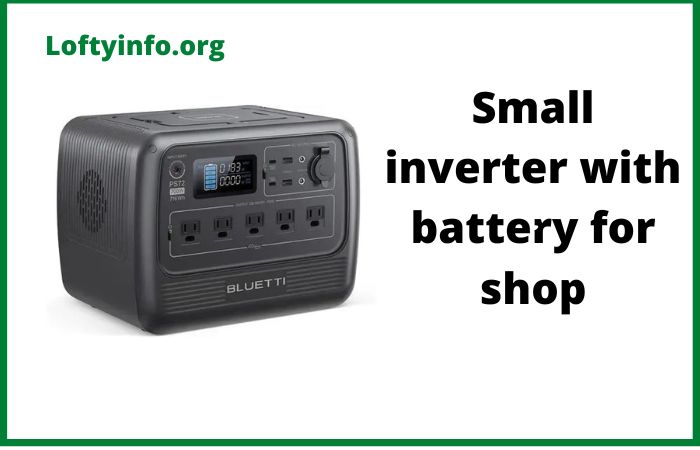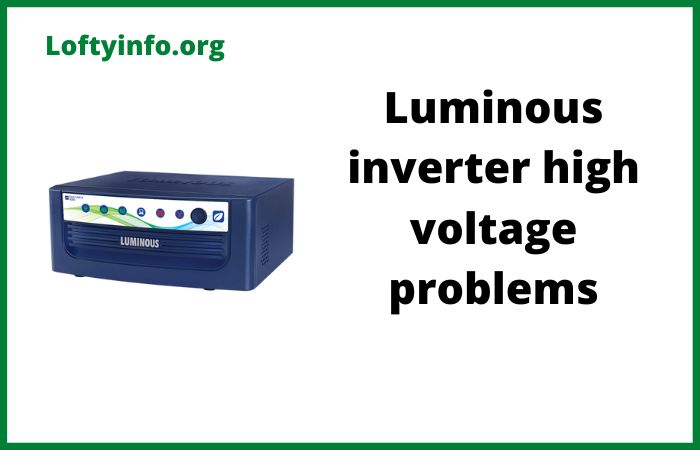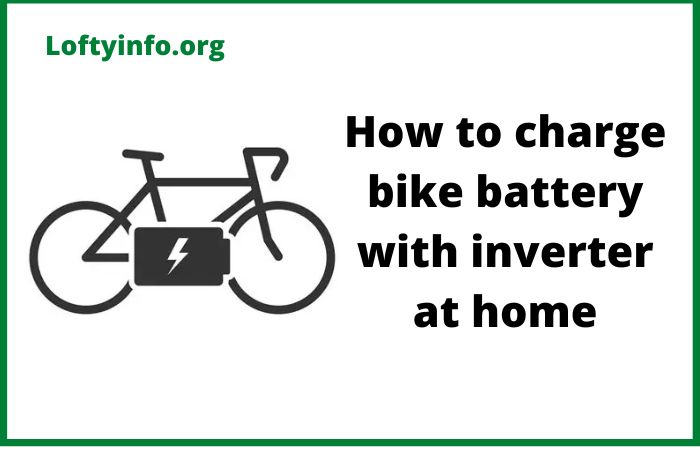Luminous Inverter 650 Overload Problems With Solutions
The Luminous inverter 650 VA model has become a popular choice for households and small offices seeking reliable backup power solutions.
This compact inverter provides adequate power for essential appliances during outages but users frequently encounter overload issues that can disrupt its performance.
Understanding these problems and their solutions is essential for maintaining optimal inverter functionality and extending its lifespan.
Overload situations occur when the connected electrical load exceeds the inverter’s maximum capacity of 650 VA.
While this might seem straightforward, several underlying factors can trigger overload warnings even when the apparent load seems within limits.
These issues range from simple user errors to complex electrical problems that require systematic troubleshooting.
Common Luminous Inverter 650 Overload Problems
1) excessive connected load beyond inverter capacity
The most common cause of overload in the Luminous 650 inverter stems from connecting too many appliances simultaneously. Many users underestimate the power consumption of their devices and end up exceeding the 650 VA threshold.
Common culprits include multiple tube lights, ceiling fans, desktop computers, televisions and phone chargers running at the same time.
The inverter’s capacity translates to approximately 520 watts of actual power output when accounting for the power factor.
A single desktop computer can consume 200-300 watts, a ceiling fan uses 75-90 watts and a 32-inch LED television draws around 60-80 watts. Adding just these three appliances already approaches or exceeds the inverter’s safe operating limit.
To resolve this issue, calculate the total wattage of all connected devices carefully. Start by checking the power rating mentioned on each appliance’s label or in its user manual.
Create a list of devices you need during power outages and prioritize essential items only. Remove or disconnect non-critical loads such as decorative lighting, extra fans in unused rooms or entertainment systems that are not immediately necessary.
The troubleshooting process involves disconnecting all appliances from the inverter and reconnecting them one by one while monitoring the load indicator. Most Luminous 650 models have LED indicators that show load levels.
Connect your highest priority devices first and keep adding until the load indicator shows approximately 70-80% capacity. This safety margin prevents sudden overload when appliances cycle on or experience startup surges.
2) Faulty or aging battery causing voltage drops
A deteriorating battery creates voltage fluctuations that can trigger false overload alarms in your Luminous inverter 650.
As batteries age beyond their typical 3-4 year lifespan, their internal resistance increases and their ability to deliver consistent voltage diminishes.
This causes the inverter to work harder to maintain output voltage, which the system interprets as an overload condition.
The symptoms include overload warnings that appear shortly after a power cut even with minimal connected load.
You might notice the inverter working fine on mains power but immediately showing overload when switching to battery mode.
The battery may also heat up excessively during discharge or show rapid voltage drops under load.
Testing the battery requires a multimeter and basic electrical knowledge. First, fully charge the battery for 8-10 hours and let it rest for 2-3 hours.
Measure the open circuit voltage which should read around 13.2-13.8 volts for a healthy 12V battery.
Next, connect a moderate load like two tube lights and a fan, then measure the voltage again after 15 minutes. If the voltage drops below 11.5 volts quickly, the battery needs replacement.
For troubleshooting, inspect the battery terminals for corrosion or loose connections which can mimic battery failure symptoms.
Clean the terminals with a wire brush and apply petroleum jelly to prevent future corrosion.
Check the electrolyte level in the battery cells if you have a traditional lead-acid battery. Top up with distilled water if levels are low but never overfill beyond the maximum mark.
If the battery is more than 4 years old and fails the voltage test, replacement is the most reliable solution.
3) loose or corroded wiring connections
Electrical connections throughout the inverter system can loosen over time due to thermal expansion and contraction cycles.
Corroded or loose connections increase electrical resistance, causing voltage drops and heat buildup.
The inverter’s protection circuitry detects these abnormal conditions and triggers an overload shutdown to prevent damage.
This problem manifests as intermittent overload warnings that come and go without any change in connected load. You might hear crackling sounds near connection points or notice discoloration or burning marks around terminals.
The inverter may work perfectly for hours and then suddenly show overload during peak usage times when current flow is highest.
Identifying loose connections requires a systematic visual and physical inspection. Switch off the main power supply and battery connection before starting.
Examine all wire connections at the inverter input, output, battery terminals and earthing points. Look for darkened areas, melted insulation or greenish corrosion deposits.
Gently tug on each wire to check if it moves in its terminal.
To fix loose connections, use an appropriate screwdriver to tighten all terminal screws firmly but avoid over-tightening which can damage the terminals.
For corroded connections, disconnect the wires and clean both the wire ends and terminal points with sandpaper or a wire brush until shiny metal is visible.
If wire ends are severely corroded, cut off the damaged portion and strip fresh insulation to expose clean copper.
Reconnect and ensure each connection is tight and secure. Consider applying a small amount of electrical contact cleaner or petroleum jelly to prevent future corrosion.
4) malfunctioning cooling fan affecting thermal management
The Luminous inverter 650 relies on an internal cooling fan to dissipate heat generated during operation.
When this fan fails or operates inefficiently, internal components overheat rapidly.
The inverter’s thermal protection circuit responds by shutting down or displaying overload warnings to prevent permanent damage to sensitive electronics.
Fan failure symptoms include unusually loud operation, grinding or rattling noises from the inverter cabinet or complete silence when the fan should be running.
The inverter body becomes excessively hot to touch even with moderate loads.
Overload warnings typically appear after 10-20 minutes of operation and resolve temporarily after the unit cools down.
Diagnosing fan problems starts with listening carefully when the inverter is operating under load.
The fan should produce a steady humming sound during high load conditions. If you hear irregular noises or no sound at all, the fan likely needs attention.
Check the ventilation slots on the inverter casing for dust buildup which can block airflow and make the fan work harder.
Cleaning and maintenance can resolve many fan-related issues. Power off and disconnect the inverter completely. Use a vacuum cleaner with a brush attachment to remove dust from ventilation grilles.
If accessible, open the inverter cabinet and carefully clean dust from the fan blades and surrounding areas using compressed air or a soft brush. Ensure the fan spins freely by gently rotating it with your finger.
If the fan is damaged, seized or makes abnormal noises even after cleaning, professional replacement is necessary.
Always maintain at least 6 inches of clearance around the inverter for proper ventilation.
5) defective inverter circuit board components
Internal electronic components on the inverter’s circuit board can fail due to power surges, manufacturing defects or component aging.
Capacitors, MOSFETs, resistors and integrated circuits that regulate power conversion may malfunction and cause the control system to misread actual load conditions. This results in false overload triggers even when actual load is well within safe limits.
This issue presents as persistent overload warnings that do not respond to load reduction efforts.
The inverter may refuse to operate even with a single light bulb connected or show overload immediately upon switching to battery mode.
Sometimes the overload indication appears randomly without any connected load whatsoever.
These symptoms indicate internal circuit problems rather than external load issues.
Identifying circuit board defects requires technical expertise and specialized testing equipment.
Visual inspection can reveal obvious problems like bulging capacitors, burn marks on the PCB or damaged components.
Most circuit failures are not visible externally.
If you have eliminated all other possible causes including battery condition, wiring and connected load, circuit board issues become the likely culprit.
Troubleshooting circuit board problems is generally beyond typical user capabilities and requires professional service.
Contact Luminous customer support or an authorized service center for diagnosis and repair. Attempting DIY repairs on circuit boards can void warranties and create safety hazards.
If the inverter is within warranty period, document all troubleshooting steps you have taken and report the issue for warranty service.
For out-of-warranty units, request a cost estimate for repairs and compare it against the price of a new inverter to make an informed decision.
6) sensor calibration errors and protection circuit sensitivity
The Luminous inverter 650 uses current and voltage sensors to monitor load conditions continuously.
These sensors can drift from their factory calibration over time or due to electrical disturbances.
When sensors provide inaccurate readings, the inverter’s microcontroller receives false information about actual load and may trigger overload protection prematurely.
Signs of sensor calibration issues include overload warnings that appear at load levels that previously worked fine.
The inverter might show overload at only 50-60% of its rated capacity or display inconsistent behavior where the same load sometimes works and sometimes triggers overload.
The load indicators may show higher readings than the actual connected load warrants.
Diagnosing sensor problems requires comparing actual measured load with the inverter’s indication.
Use a clamp meter to measure the actual current draw from your connected appliances and calculate the total power consumption. Compare this with what the inverter displays or indicates through its LED system.
A significant discrepancy suggests sensor calibration drift.
Resolving sensor calibration typically requires factory service or authorized technician intervention as it involves accessing internal circuits and using specialized calibration equipment.
You can try a complete system reset first. Disconnect all loads, switch off the inverter, disconnect the battery and mains power, then wait 10-15 minutes before reconnecting everything in reverse order.
This sometimes allows the microcontroller to reset its baseline readings. If the problem persists after reset, professional recalibration or sensor replacement becomes necessary.
Regular maintenance and avoiding exposure to extreme temperatures can help prevent sensor drift and maintain accuracy over the inverter’s lifespan.
Common luminous 1250 inverter overload problems with solutions
Why common goodwe inverter problems occur
Causes of growatt spf 5000 es problems






